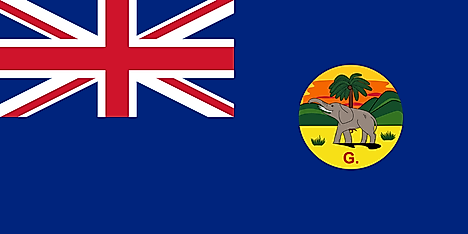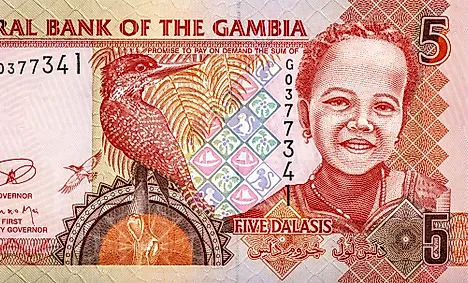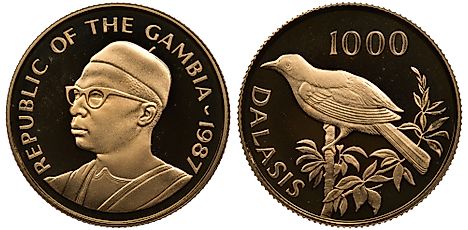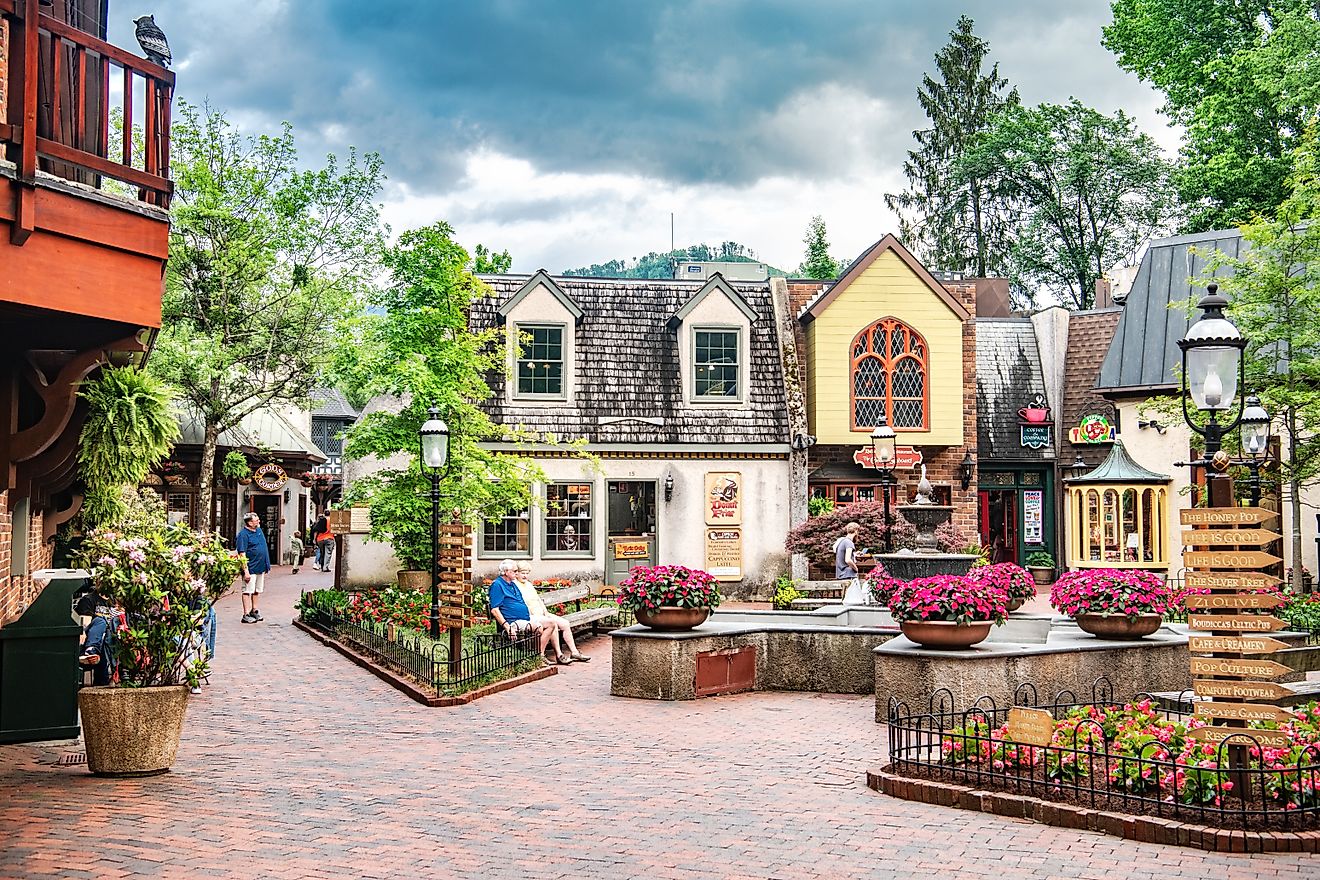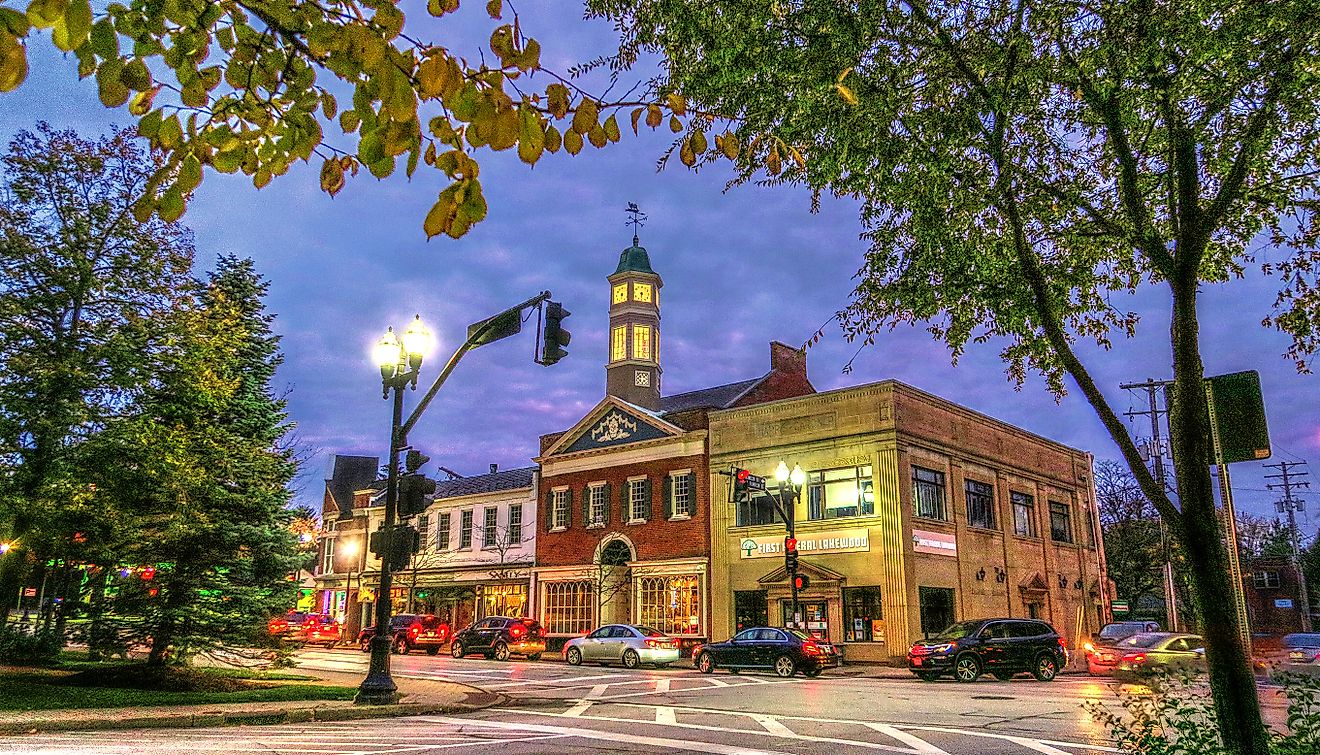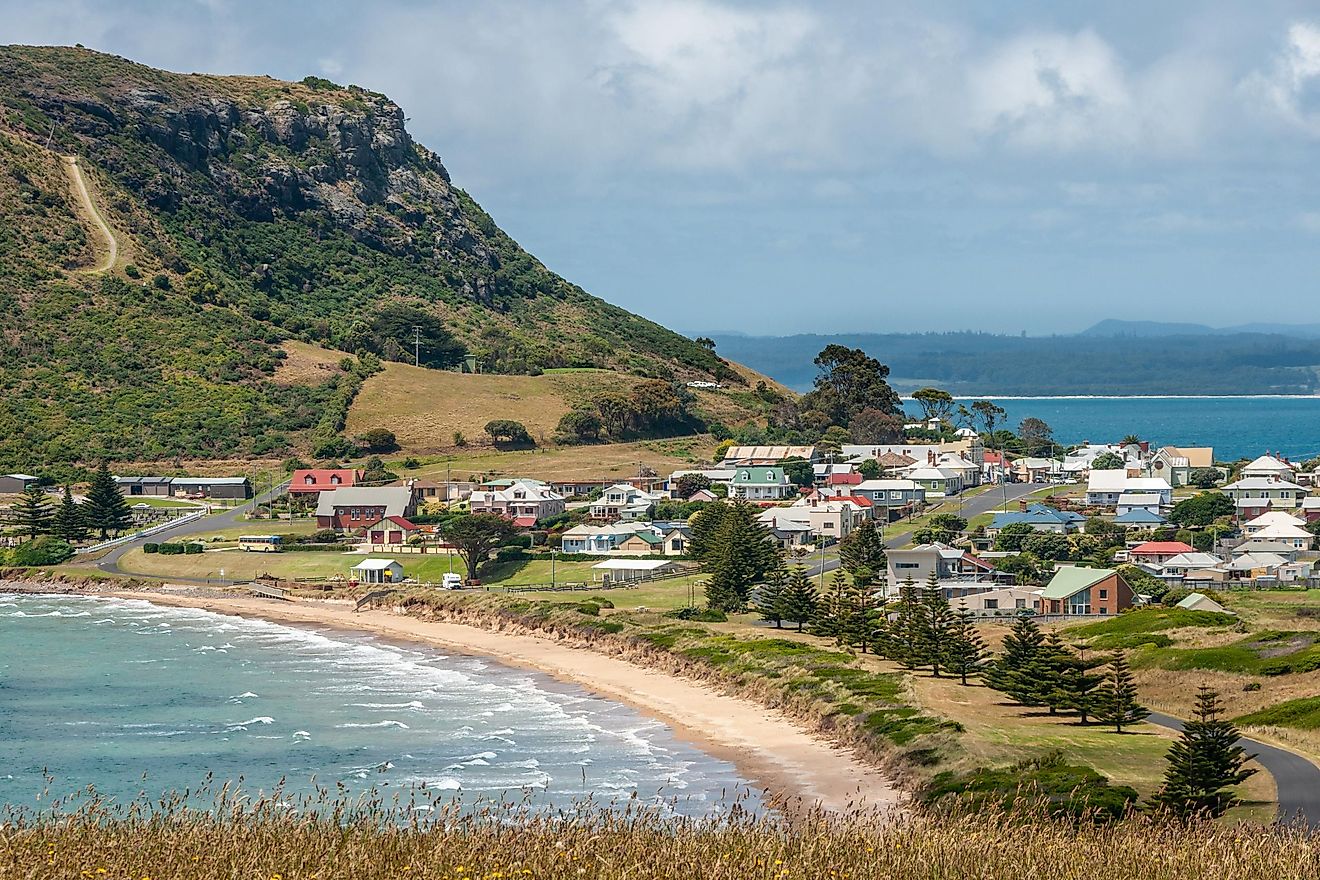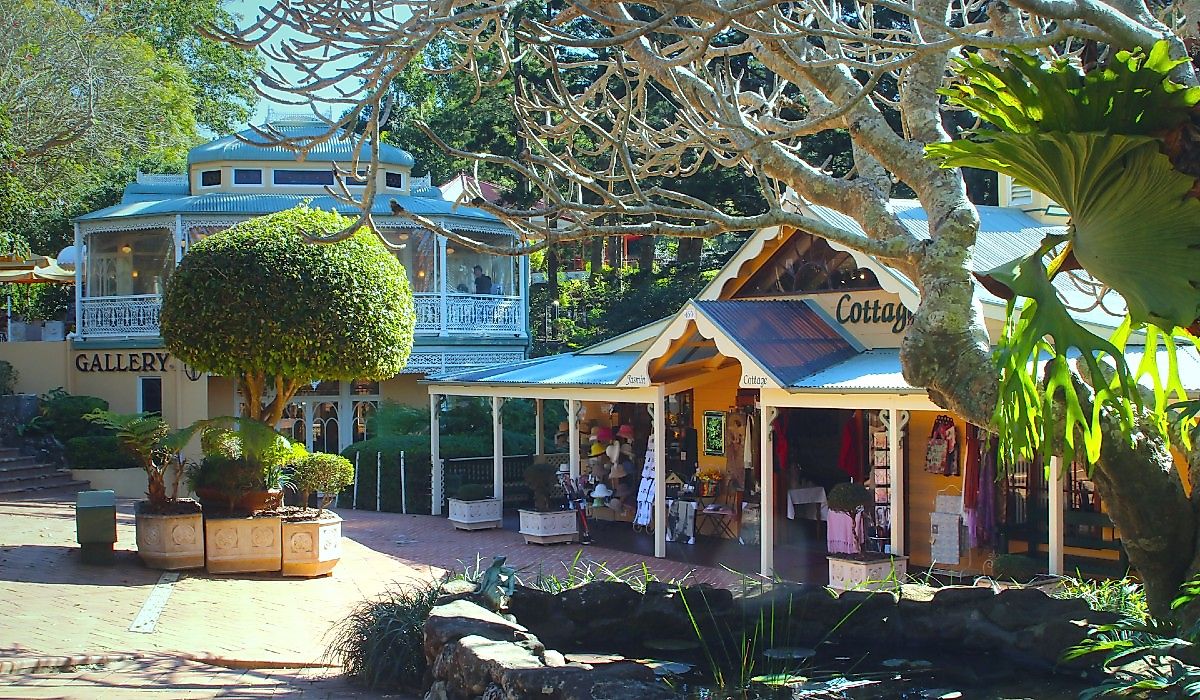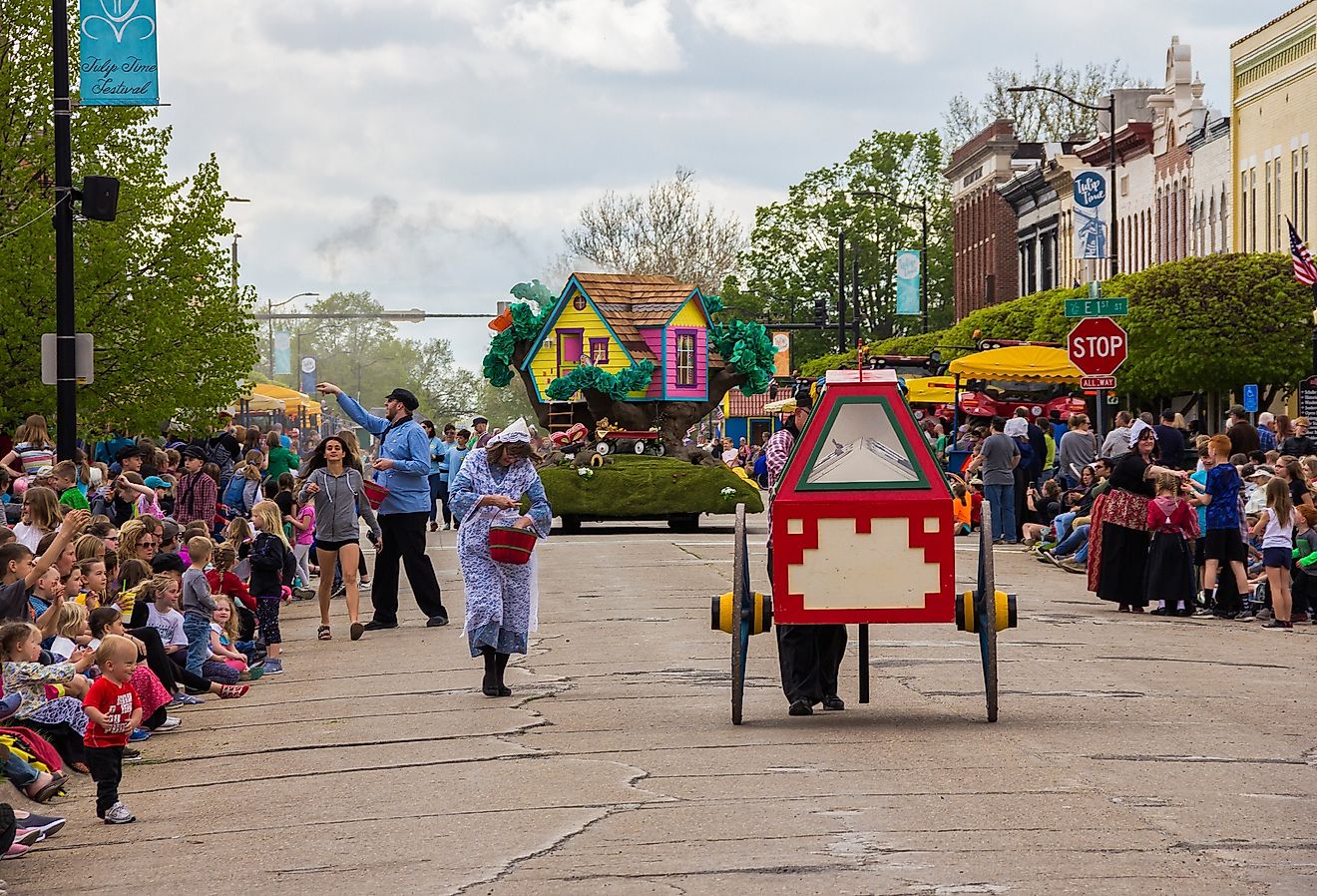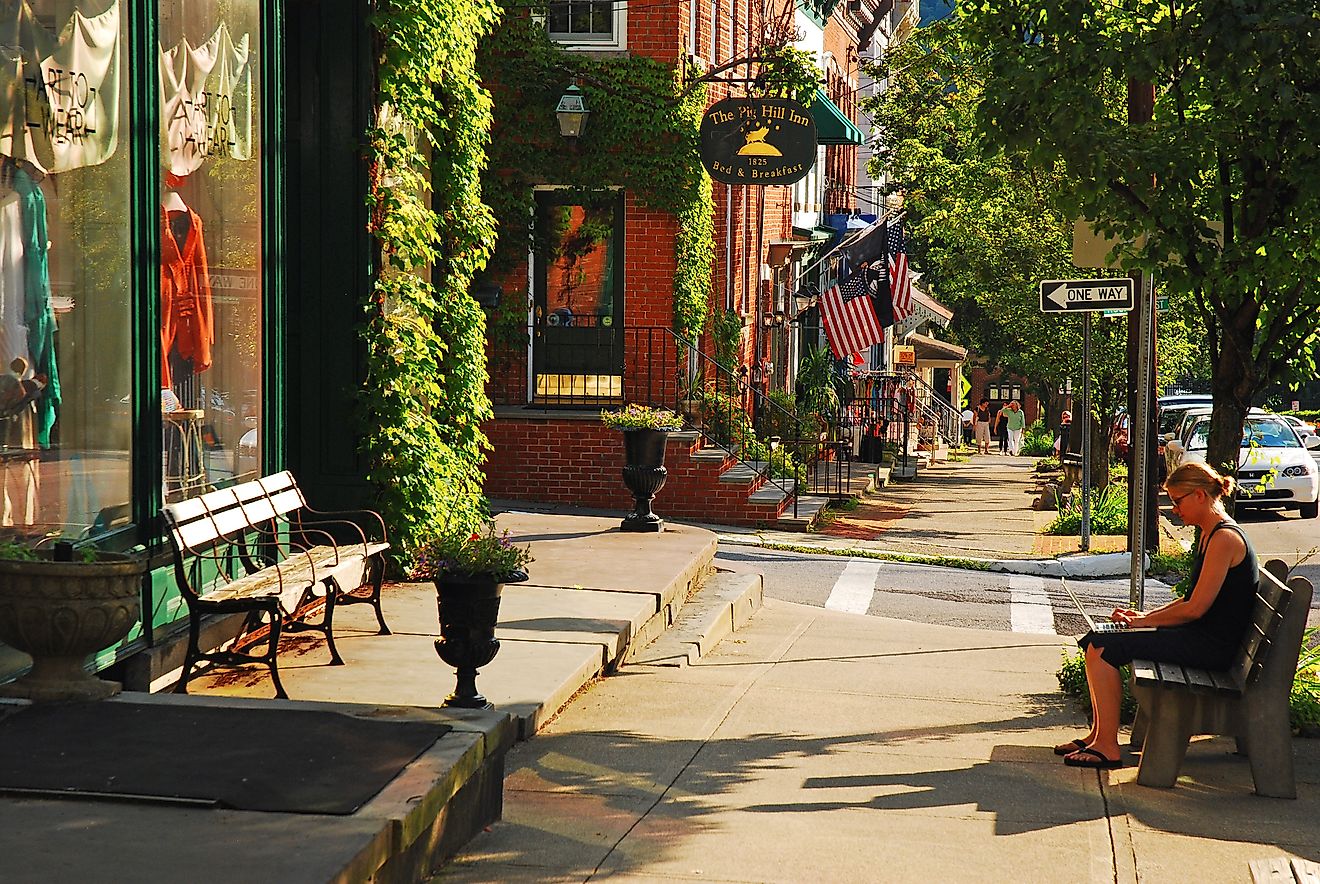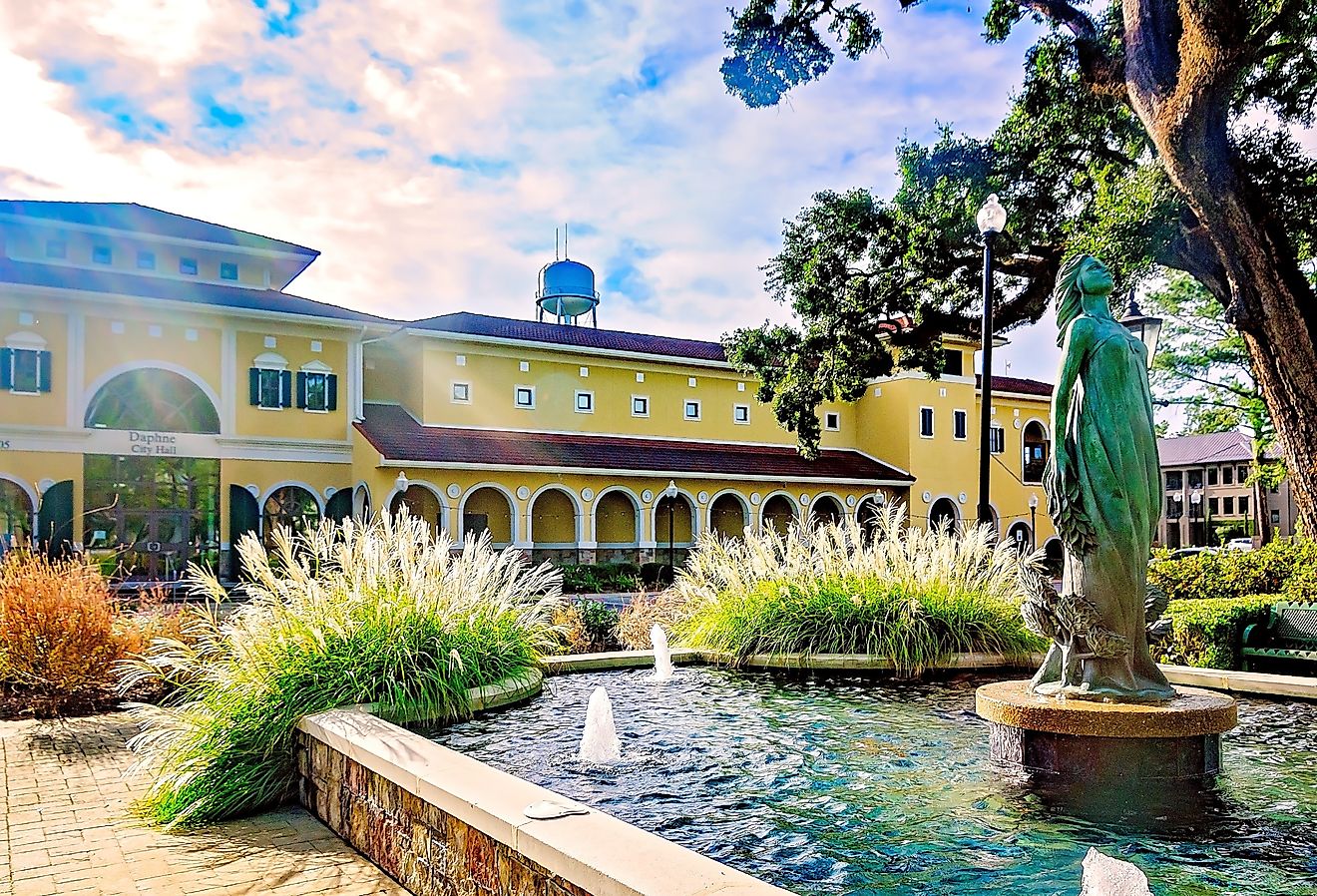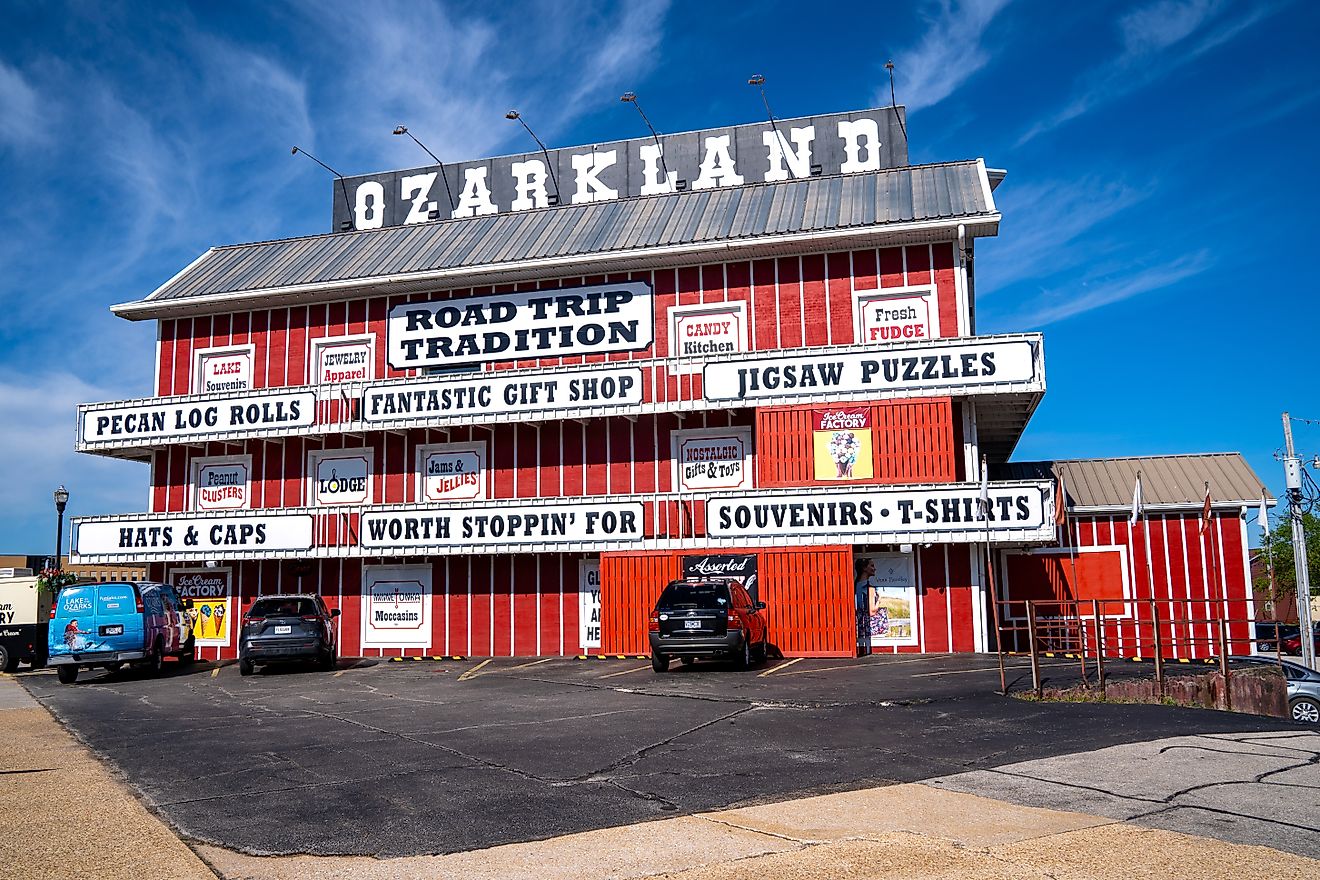Flags, Symbols, & Currencies of the Gambia
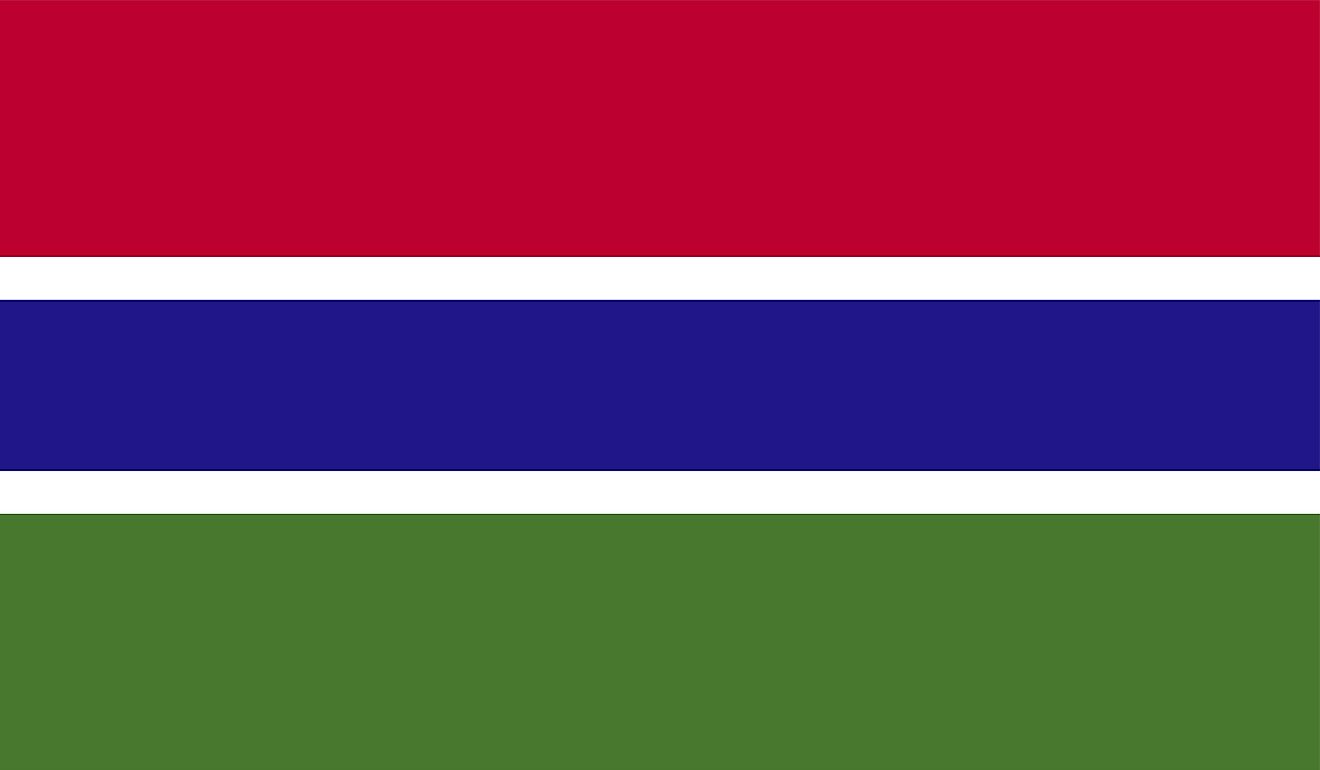
The Gambia flag was officially adopted on February 18, 1965 to replace the British colonial flag, which featured the Blue ensign defaced with Gambi's coat of arms. The Gambian flag was designed by Louis Thomasi and has been the country's flag since independence, including the period of confederation with Senegal.
The flag of Gambia consists of three equal horizontal bands of red (top), blue, and green, with the three bands separated from each other by two thin white strips. These colors carry regional, cultural, and political meanings. Red stands for the sun and the savannah, because of the Gambia's close proximity to the sun. Blue represents the Gambia River, the country's main feature, and green symbolizes forests and agriculture. The thin white stripes denote unity and peace
History of the Flag of the Gambia
When the British arrived in Gambia, their aim was to take control of the area and make it protectorate. Gambia eventually became a protectorate in the 1820s within Sierr Leone. However, in 1889, Gambia became a separate British colony and adopted the colonia flag; the Blue ensign defaced with Gambia's seal. This flag was flown in Gambia until it was replaced by the current flag at independence.
Symbols of Gambia
National Coat of Arms of the Gambia
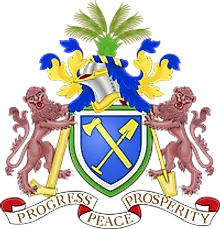
The coat of arms of the Gambia was created by Nicholas Potin and adopted in 1964 and retained even after independence. The Gambia's coat of arms showcases two lions holding onto an axe and hoe (symbols of agriculture), and supporting a shield. A heraldic helmet rests above the shield, and an oil palm. The national motto: Progres, Peace, Prosperity, is displayed on a ribbon below. The two lions symbolize the Gambia's history as part of the British Empire and the country's two main ethnic groups; Fulani and Mandinka. The palm tree is a vital national tree of the Gambia.
National Anthem
- Anthem Title: For The Gambia Our Homeland
- Music composer: Jeremy F Howe
- Lyricist: Virginia Julia Howe
- Date of Adoption: 1965
"For The Gambia Our Homeland" is the title of the Gambia's national anthem. Jeremy F Howe composed the song, which was based on the Mandinka traditional song titled "Foday Kaba Dumbuya. The lyrics were written by Virginia Julia Howe. Before independence in 1965, a competion was held in The Gambia to pick the national anthem, with "For The Gambia Our Homeland" emerging as the best pick.
For the Gambia Our Homeland
For The Gambia, our homeland
We strive and work and pray,
That all may live in unity,
Freedom and peace each day.
Let justice guide our actions
Towards the common good,
And join our diverse peoples
To prove man's brotherhood.
We pledge our firm allegiance,
Our promise we renew;
Keep us, great God of nations,
To The Gambia ever true.
The Currency of Gambia is the Gambian Dalasi
The currency of the Gambia is known as Dalasi. The assets and accountability of the Gambia Currency Board were reformed in 1971 in the Central Bank of the Gambia. During the same year, the currency was subdivided on the criteria of 1 Dalasi which is equal to 100 Bututs. The Royal Mint minted the coins. Dalasi is sub-portioned into hundreds called bututs. Initially, the government of the Gambia was using the Gambian pound which is equivalent to 5 dalasi or 4 shillings. Some 1, 5, 10, 25 and 50 coin denominations were launched in 1971. The 1 and 5 coins were mounted from bronze, the 10 was coined from brass, and finally, the 25 and the 50 bututs were made from nickel. The new design of the three valuable denominations was copied from the previous denomination of 1, 2 and 4 shillings while the lower denominations were copied from the previous designs of 6,1 and 3 pence coins. All coins produced during this series visualized the image of former president Dawda Jawara.
Coins
Later in 1987, a new 1 dalasi coin was pioneered after designing it from a model of a 50 pence United Kingdom coin. This was introduced to eliminate the lower denomination coin which was not used frequently. A new series of coins with a new image of the coat of arms was introduced in 1998.This new series lacked the picture of President Dawda Jawara. The older jawara coins are still used as legal tenders although the 1 dalasi coins were reduced in size and weight. At the moment only the 1, 25 and 50 bututs coin are being used in the Gambia. The 1, 5 and 10 coins ceased to be in the circulation due to degradation of their value with time.
Banknotes
The banknote currently used in the Gambia includes 5, 10, 25 and 100 dalasi. A 1 dalasi note was launched and circulated between 1971 and 1987. The initial bank note was provided on July 27, 1996 and circulated up to 2001 when they have reprinted again. A new series of notes was released by the Bank of Gambia on July 27, 2006, with the images matching the current trending issues in the country. There was much advancement in the design of the paper, the thickness of the paper, and some security measures. The 5 and 10 dalasi are embedded with an overcoat of a special varnish to prolong its lifetime. The 100 dalasi which is the highest note is fitted with a silver foil on the fore side of the note consisting 100 images embossed to the foil.
Commemorative Issue
The government of the Gambia has used its currency for commemorative purposes. A 20 polymer dalasi was developed and circulated to commemorate 20 years of Yahya Jammeh's governance. Another new type of bank notes was released on April 15, 2015. These notes included a 20 dalasi note to replace the 25 dalasi and 200 a dalasi note. The two notes contain a portrait image of former President Yahya Jammeh.
Historical Currencies of Gambia
The Gambia adopted paper currency for the first time in 1916, following the introduction of pounds and shillings by the West African Currency Board. The banknotes minted were identical to the ones that were being used across West Africa at the time. The shilling and pound currencies lasted until 1965 when they were replaced by the Gambian shilling and pound. However, six year later (1971), the Gambia introduced the dalasi currency to distinguish itself from the rest of West Africa.
